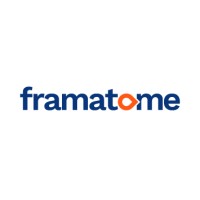
North Texas Municipal Water District Company Cyber Security Posture
ntmwd.comAbout Us: The North Texas Municipal Water District (NTMWD) is a regional provider of water, wastewater and solid waste disposal services. The NTMWD serves a population of more than 2 million residents in communities across the north Texas counties of Collin, Dallas, Denton, Fannin, Grayson, Hopkins, Hunt, Kaufman, Rains, and Rockwall – a service territory covering 2,200 square miles. History: In 1946, local leaders from ten cities formed the Tri-County Reservoir Association (TCRA) to work with the U.S. Army Corps of Engineers to build Lavon Lake for flood control and water storage. By request of the TCRA, the Texas Legislature authorized the formation of the North Texas Municipal Water District (NTMWD) in 1951 to develop, finance, construct, and operate facilities to meet future water needs for the region. The 10 original cities - Farmersville, Forney, Garland, McKinney, Mesquite, Plano, Princeton, Rockwall, Royse City, and Wylie - became the original Member Cities, each with representation on our Board of Directors. Three additional cities were added including Richardson (1973), Allen (1998), and Frisco (2001). We also provide treated water service to 33 Customers (cities and other special/municipal utility districts) and indirectly serve 46 other communities who purchase water from our Member Cities and Customers. We began offering wastewater treatment services in the 1970s and solid waste disposal services in the 1980s. We also operate the largest man-made wetlands in the country - a vital water reuse project that helps to naturally polish treated wastewater, supplement our water supplies, and supports a valuable ecosystem to the region. Regional Service Through Unity… Meeting Our Region’s Needs Today and Tomorrow
NTMWD Company Details
north-texas-municipal-water-district
411 employees
6998.0
221
Utilities
ntmwd.com
Scan still pending
NOR_2759257
In-progress
Between 800 and 900
This score is AI-generated and less favored by cyber insurers, who prefer the TPRM score.
 NTMWD Global Score
NTMWD Global Score.png)

North Texas Municipal Water District Company Scoring based on AI Models
| Model Name | Date | Description | Current Score Difference | Score |
|---|---|---|---|---|
| AVERAGE-Industry | 03-12-2025 | This score represents the average cybersecurity rating of companies already scanned within the same industry. It provides a benchmark to compare an individual company's security posture against its industry peers. | N/A | Between 800 and 900 |
North Texas Municipal Water District Company Cyber Security News & History
| Entity | Type | Severity | Impact | Seen | Url ID | Details | View |
|---|---|---|---|---|---|---|---|
| North Texas Municipal Water District | Cyber Attack | 60 | 2 | 11/2023 | NOR125224 | Link | |
Rankiteo Explanation : Attack limited on finance or reputationDescription: A cybersecurity attack affected the North Texas Municipal Water District, but it had no effect on water services. The district claimed in a statement that the event had an impact on both its phone system and its computer network. The district's business network has largely recovered. The incident has not impacted the provision of solid waste, wastewater, or water services to customers or cities. Officials from the water district stated that they are actively investigating the extent of any unauthorised activity in collaboration with forensic experts. | |||||||
North Texas Municipal Water District Company Subsidiaries

About Us: The North Texas Municipal Water District (NTMWD) is a regional provider of water, wastewater and solid waste disposal services. The NTMWD serves a population of more than 2 million residents in communities across the north Texas counties of Collin, Dallas, Denton, Fannin, Grayson, Hopkins, Hunt, Kaufman, Rains, and Rockwall – a service territory covering 2,200 square miles. History: In 1946, local leaders from ten cities formed the Tri-County Reservoir Association (TCRA) to work with the U.S. Army Corps of Engineers to build Lavon Lake for flood control and water storage. By request of the TCRA, the Texas Legislature authorized the formation of the North Texas Municipal Water District (NTMWD) in 1951 to develop, finance, construct, and operate facilities to meet future water needs for the region. The 10 original cities - Farmersville, Forney, Garland, McKinney, Mesquite, Plano, Princeton, Rockwall, Royse City, and Wylie - became the original Member Cities, each with representation on our Board of Directors. Three additional cities were added including Richardson (1973), Allen (1998), and Frisco (2001). We also provide treated water service to 33 Customers (cities and other special/municipal utility districts) and indirectly serve 46 other communities who purchase water from our Member Cities and Customers. We began offering wastewater treatment services in the 1970s and solid waste disposal services in the 1980s. We also operate the largest man-made wetlands in the country - a vital water reuse project that helps to naturally polish treated wastewater, supplement our water supplies, and supports a valuable ecosystem to the region. Regional Service Through Unity… Meeting Our Region’s Needs Today and Tomorrow
Access Data Using Our API

Get company history
.png)
NTMWD Cyber Security News
North Texas Municipal Water District suffers cyberattack
The North Texas Municipal Water District reported that it was hit with a cyberattack that disrupted some of its systems, including phones.
North Texas water utility the latest suspected industrial ransomware target
Authorities are investigating a suspected ransomware attack against the North Texas Municipal Water District, which appears to be unrelated to a ...
Texas House OKs bills aimed at strengthening grid, water infrastructure
Senate Bill 7 would help communities create new water supplies and repair aging water systems alongside House Joint Resolution 7, a proposed ...
North Texas water utility serving 2 million hit with cyberattack
A water utility serving two million people in North Texas is dealing with a cybersecurity incident that caused operational issues.
The American Water cyberattack: Explaining how it happened
On Oct. 3, 2024, American Water was breached in what appeared to be a significant cyberattack. The attack involved unauthorized access to ...
Large Texas Water Utility Hit With Ransomware Attack
The North Texas Municipal Water District, which supplies water to sprawling Collin County suburbs, is the latest target of a ransomware attack.
Alleged Daixin hackers strike at NTMWD water utility, causing disruptions
Hackers have likely accessed the affected device—a Unitronics Vision Series PLC with a Human Machine Interface (HMI)—by exploiting cybersecurity ...
Cyber attack hits North Texas Municipal Water District
Officials with the North Texas Municipal Water District confirmed Tuesday morning that it detected a "cybersecurity incident" impacting its ...
North Texas Municipal Water District Becomes Latest Local Entity Hit by a Ransomware Attack
The North Texas Municipal Water District, which serves more than 2.2 million people, confirmed Tuesday that it had been the victim of a ransomware attack.

NTMWD Similar Companies

Enel Group
“Open Power for a brighter future: we empower sustainable progress.” We are a multinational company changing the face of energy, one of the world’s leading integrated utilities. As the largest private player in producing clean energy with renewable sources we have more than 88 GW of total capacit

Joint stock company "Elektroprivreda Srbije"
Joint stock company Elektroprivreda Srbije as the largest company in Serbia represents economic and energy backbone of the country. The main activities of EPS AD are the production, supply and trade of electricity. EPS is owner a the coal mines, thermopower plant and hydropower plant. EPS supplies e

Electrica
Electrica Group is a key player in the electricity distribution, supply and production market in Romania, as well as one of the most important players in the energy services sector. As of July 2014, Electrica has become a company with private majority capital, listed on the Bucharest and London sto

Westinghouse Electric Company
Westinghouse Electric Company is the world's leading supplier of safe and innovative nuclear technology. We provide our utility customers around the world with the most reliable, dependable nuclear power plants, nuclear fuel, plant automation and operating plant products and services. We are driven

Framatome
Framatome is an international leader in nuclear energy recognized for its innovative, digital and value added solutions for the global nuclear fleet. With worldwide expertise and a proven track record for reliability and performance, the company designs, services and installs components, fuel, and i

NTPC Limited
NTPC Limited is India’s largest power generation utility with roots planted way back in 1975 to accelerate power development in India. Since then it has established itself as the dominant power major with a presence in the entire value chain of the power generation business. From fossil fuels, it ha

Frequently Asked Questions (FAQ) on Cybersecurity Incidents
NTMWD CyberSecurity History Information
Total Incidents: According to Rankiteo, NTMWD has faced 1 incidents in the past.
Incident Types: The types of cybersecurity incidents that have occurred include ['Cyber Attack'].
Total Financial Loss: The total financial loss from these incidents is estimated to be {total_financial_loss}.
Cybersecurity Posture: The company's overall cybersecurity posture is described as About Us: The North Texas Municipal Water District (NTMWD) is a regional provider of water, wastewater and solid waste disposal services. The NTMWD serves a population of more than 2 million residents in communities across the north Texas counties of Collin, Dallas, Denton, Fannin, Grayson, Hopkins, Hunt, Kaufman, Rains, and Rockwall – a service territory covering 2,200 square miles. History: In 1946, local leaders from ten cities formed the Tri-County Reservoir Association (TCRA) to work with the U.S. Army Corps of Engineers to build Lavon Lake for flood control and water storage. By request of the TCRA, the Texas Legislature authorized the formation of the North Texas Municipal Water District (NTMWD) in 1951 to develop, finance, construct, and operate facilities to meet future water needs for the region. The 10 original cities - Farmersville, Forney, Garland, McKinney, Mesquite, Plano, Princeton, Rockwall, Royse City, and Wylie - became the original Member Cities, each with representation on our Board of Directors. Three additional cities were added including Richardson (1973), Allen (1998), and Frisco (2001). We also provide treated water service to 33 Customers (cities and other special/municipal utility districts) and indirectly serve 46 other communities who purchase water from our Member Cities and Customers. We began offering wastewater treatment services in the 1970s and solid waste disposal services in the 1980s. We also operate the largest man-made wetlands in the country - a vital water reuse project that helps to naturally polish treated wastewater, supplement our water supplies, and supports a valuable ecosystem to the region. Regional Service Through Unity… Meeting Our Region’s Needs Today and Tomorrow.
Detection and Response: The company detects and responds to cybersecurity incidents through {description_of_detection_and_response_process}.
Incident Details
Incident 1: Ransomware Attack
Title: {Incident_Title}
Description: {Brief_description_of_the_incident}
Date Detected: {Detection_Date}
Date Publicly Disclosed: {Disclosure_Date}
Date Resolved: {Resolution_Date}
Type: {Type_of_Attack}
Attack Vector: {Attack_Vector}
Vulnerability Exploited: {Vulnerability}
Threat Actor: {Threat_Actor}
Motivation: {Motivation}
Incident 2: Data Breach
Title: {Incident_Title}
Description: {Brief_description_of_the_incident}
Date Detected: {Detection_Date}
Date Publicly Disclosed: {Disclosure_Date}
Date Resolved: {Resolution_Date}
Type: {Type_of_Attack}
Attack Vector: {Attack_Vector}
Vulnerability Exploited: {Vulnerability}
Threat Actor: {Threat_Actor}
Motivation: {Motivation}
Common Attack Types: As of now, the company has not encountered any reported incidents involving common cyberattacks.
Identification of Attack Vectors: The company identifies the attack vectors used in incidents through {description_of_identification_process}.
Impact of the Incidents
Incident 1: Ransomware Attack
Financial Loss: {Financial_Loss}
Data Compromised: {Data_Compromised}
Systems Affected: {Systems_Affected}
Downtime: {Downtime}
Operational Impact: {Operational_Impact}
Conversion Rate Impact: {Conversion_Rate_Impact}
Revenue Loss: {Revenue_Loss}
Customer Complaints: {Customer_Complaints}
Brand Reputation Impact: {Brand_Reputation_Impact}
Legal Liabilities: {Legal_Liabilities}
Identity Theft Risk: {Identity_Theft_Risk}
Payment Information Risk: {Payment_Information_Risk}
Incident 2: Data Breach
Financial Loss: {Financial_Loss}
Data Compromised: {Data_Compromised}
Systems Affected: {Systems_Affected}
Downtime: {Downtime}
Operational Impact: {Operational_Impact}
Conversion Rate Impact: {Conversion_Rate_Impact}
Revenue Loss: {Revenue_Loss}
Customer Complaints: {Customer_Complaints}
Brand Reputation Impact: {Brand_Reputation_Impact}
Legal Liabilities: {Legal_Liabilities}
Identity Theft Risk: {Identity_Theft_Risk}
Payment Information Risk: {Payment_Information_Risk}
Average Financial Loss: The average financial loss per incident is {average_financial_loss}.
Commonly Compromised Data Types: The types of data most commonly compromised in incidents are {list_of_commonly_compromised_data_types}.
Incident 1: Ransomware Attack
Entity Name: {Entity_Name}
Entity Type: {Entity_Type}
Industry: {Industry}
Location: {Location}
Size: {Size}
Customers Affected: {Customers_Affected}
Incident 2: Data Breach
Entity Name: {Entity_Name}
Entity Type: {Entity_Type}
Industry: {Industry}
Location: {Location}
Size: {Size}
Customers Affected: {Customers_Affected}
Response to the Incidents
Incident 1: Ransomware Attack
Incident Response Plan Activated: {Yes/No}
Third Party Assistance: {Yes/No}
Law Enforcement Notified: {Yes/No}
Containment Measures: {Containment_Measures}
Remediation Measures: {Remediation_Measures}
Recovery Measures: {Recovery_Measures}
Communication Strategy: {Communication_Strategy}
Adaptive Behavioral WAF: {Adaptive_Behavioral_WAF}
On-Demand Scrubbing Services: {On_Demand_Scrubbing_Services}
Network Segmentation: {Network_Segmentation}
Enhanced Monitoring: {Enhanced_Monitoring}
Incident 2: Data Breach
Incident Response Plan Activated: {Yes/No}
Third Party Assistance: {Yes/No}
Law Enforcement Notified: {Yes/No}
Containment Measures: {Containment_Measures}
Remediation Measures: {Remediation_Measures}
Recovery Measures: {Recovery_Measures}
Communication Strategy: {Communication_Strategy}
Adaptive Behavioral WAF: {Adaptive_Behavioral_WAF}
On-Demand Scrubbing Services: {On_Demand_Scrubbing_Services}
Network Segmentation: {Network_Segmentation}
Enhanced Monitoring: {Enhanced_Monitoring}
Incident Response Plan: The company's incident response plan is described as {description_of_incident_response_plan}.
Third-Party Assistance: The company involves third-party assistance in incident response through {description_of_third_party_involvement}.
Data Breach Information
Incident 2: Data Breach
Type of Data Compromised: {Type_of_Data}
Number of Records Exposed: {Number_of_Records}
Sensitivity of Data: {Sensitivity_of_Data}
Data Exfiltration: {Yes/No}
Data Encryption: {Yes/No}
File Types Exposed: {File_Types}
Personally Identifiable Information: {Yes/No}
Prevention of Data Exfiltration: The company takes the following measures to prevent data exfiltration: {description_of_prevention_measures}.
Handling of PII Incidents: The company handles incidents involving personally identifiable information (PII) through {description_of_handling_process}.
Ransomware Information
Incident 1: Ransomware Attack
Ransom Demanded: {Ransom_Amount}
Ransom Paid: {Ransom_Paid}
Ransomware Strain: {Ransomware_Strain}
Data Encryption: {Yes/No}
Data Exfiltration: {Yes/No}
Ransom Payment Policy: The company's policy on paying ransoms in ransomware incidents is described as {description_of_ransom_payment_policy}.
Data Recovery from Ransomware: The company recovers data encrypted by ransomware through {description_of_data_recovery_process}.
Regulatory Compliance
Incident 1: Ransomware Attack
Regulations Violated: {Regulations_Violated}
Fines Imposed: {Fines_Imposed}
Legal Actions: {Legal_Actions}
Regulatory Notifications: {Regulatory_Notifications}
Incident 2: Data Breach
Regulations Violated: {Regulations_Violated}
Fines Imposed: {Fines_Imposed}
Legal Actions: {Legal_Actions}
Regulatory Notifications: {Regulatory_Notifications}
Regulatory Frameworks: The company complies with the following regulatory frameworks regarding cybersecurity: {list_of_regulatory_frameworks}.
Ensuring Regulatory Compliance: The company ensures compliance with regulatory requirements through {description_of_compliance_measures}.
Lessons Learned and Recommendations
Incident 1: Ransomware Attack
Lessons Learned: {Lessons_Learned}
Incident 2: Data Breach
Lessons Learned: {Lessons_Learned}
Incident 1: Ransomware Attack
Recommendations: {Recommendations}
Incident 2: Data Breach
Recommendations: {Recommendations}
Key Lessons Learned: The key lessons learned from past incidents are {list_of_key_lessons_learned}.
Implemented Recommendations: The company has implemented the following recommendations to improve cybersecurity: {list_of_implemented_recommendations}.
References
Additional Resources: Stakeholders can find additional resources on cybersecurity best practices at {list_of_additional_resources}.
Investigation Status
Incident 1: Ransomware Attack
Investigation Status: {Investigation_Status}
Incident 2: Data Breach
Investigation Status: {Investigation_Status}
Communication of Investigation Status: The company communicates the status of incident investigations to stakeholders through {description_of_communication_process}.
Stakeholder and Customer Advisories
Incident 1: Ransomware Attack
Stakeholder Advisories: {Stakeholder_Advisories}
Customer Advisories: {Customer_Advisories}
Incident 2: Data Breach
Stakeholder Advisories: {Stakeholder_Advisories}
Customer Advisories: {Customer_Advisories}
Advisories Provided: The company provides the following advisories to stakeholders and customers following an incident: {description_of_advisories_provided}.
Initial Access Broker
Incident 1: Ransomware Attack
Entry Point: {Entry_Point}
Reconnaissance Period: {Reconnaissance_Period}
Backdoors Established: {Backdoors_Established}
High Value Targets: {High_Value_Targets}
Data Sold on Dark Web: {Yes/No}
Incident 2: Data Breach
Entry Point: {Entry_Point}
Reconnaissance Period: {Reconnaissance_Period}
Backdoors Established: {Backdoors_Established}
High Value Targets: {High_Value_Targets}
Data Sold on Dark Web: {Yes/No}
Monitoring and Mitigation of Initial Access Brokers: The company monitors and mitigates the activities of initial access brokers through {description_of_monitoring_and_mitigation_measures}.
Post-Incident Analysis
Incident 1: Ransomware Attack
Root Causes: {Root_Causes}
Corrective Actions: {Corrective_Actions}
Incident 2: Data Breach
Root Causes: {Root_Causes}
Corrective Actions: {Corrective_Actions}
Post-Incident Analysis Process: The company's process for conducting post-incident analysis is described as {description_of_post_incident_analysis_process}.
Corrective Actions Taken: The company has taken the following corrective actions based on post-incident analysis: {list_of_corrective_actions_taken}.
Additional Questions
General Information
Ransom Payment History: The company has {paid/not_paid} ransoms in the past.
Last Ransom Demanded: The amount of the last ransom demanded was {last_ransom_amount}.
Last Attacking Group: The attacking group in the last incident was {last_attacking_group}.
Incident Details
Most Recent Incident Detected: The most recent incident detected was on {most_recent_incident_detected_date}.
Most Recent Incident Publicly Disclosed: The most recent incident publicly disclosed was on {most_recent_incident_publicly_disclosed_date}.
Most Recent Incident Resolved: The most recent incident resolved was on {most_recent_incident_resolved_date}.
Impact of the Incidents
Highest Financial Loss: The highest financial loss from an incident was {highest_financial_loss}.
Most Significant Data Compromised: The most significant data compromised in an incident was {most_significant_data_compromised}.
Most Significant System Affected: The most significant system affected in an incident was {most_significant_system_affected}.
Response to the Incidents
Third-Party Assistance in Most Recent Incident: The third-party assistance involved in the most recent incident was {third_party_assistance_in_most_recent_incident}.
Containment Measures in Most Recent Incident: The containment measures taken in the most recent incident were {containment_measures_in_most_recent_incident}.
Data Breach Information
Most Sensitive Data Compromised: The most sensitive data compromised in a breach was {most_sensitive_data_compromised}.
Number of Records Exposed: The number of records exposed in the most significant breach was {number_of_records_exposed}.
Ransomware Information
Highest Ransom Demanded: The highest ransom demanded in a ransomware incident was {highest_ransom_demanded}.
Highest Ransom Paid: The highest ransom paid in a ransomware incident was {highest_ransom_paid}.
Regulatory Compliance
Highest Fine Imposed: The highest fine imposed for a regulatory violation was {highest_fine_imposed}.
Most Significant Legal Action: The most significant legal action taken for a regulatory violation was {most_significant_legal_action}.
Lessons Learned and Recommendations
Most Significant Lesson Learned: The most significant lesson learned from past incidents was {most_significant_lesson_learned}.
Most Significant Recommendation Implemented: The most significant recommendation implemented to improve cybersecurity was {most_significant_recommendation_implemented}.
References
Most Recent Source: The most recent source of information about an incident is {most_recent_source}.
Most Recent URL for Additional Resources: The most recent URL for additional resources on cybersecurity best practices is {most_recent_url}.
Investigation Status
Current Status of Most Recent Investigation: The current status of the most recent investigation is {current_status_of_most_recent_investigation}.
Stakeholder and Customer Advisories
Most Recent Stakeholder Advisory: The most recent stakeholder advisory issued was {most_recent_stakeholder_advisory}.
Most Recent Customer Advisory: The most recent customer advisory issued was {most_recent_customer_advisory}.
Initial Access Broker
Most Recent Entry Point: The most recent entry point used by an initial access broker was {most_recent_entry_point}.
Most Recent Reconnaissance Period: The most recent reconnaissance period for an incident was {most_recent_reconnaissance_period}.
Post-Incident Analysis
Most Significant Root Cause: The most significant root cause identified in post-incident analysis was {most_significant_root_cause}.
Most Significant Corrective Action: The most significant corrective action taken based on post-incident analysis was {most_significant_corrective_action}.
What Do We Measure?
















Every week, Rankiteo analyzes billions of signals to give organizations a sharper, faster view of emerging risks. With deeper, more actionable intelligence at their fingertips, security teams can outpace threat actors, respond instantly to Zero-Day attacks, and dramatically shrink their risk exposure window.
These are some of the factors we use to calculate the overall score:
Identify exposed access points, detect misconfigured SSL certificates, and uncover vulnerabilities across the network infrastructure.
Gain visibility into the software components used within an organization to detect vulnerabilities, manage risk, and ensure supply chain security.
Monitor and manage all IT assets and their configurations to ensure accurate, real-time visibility across the company's technology environment.
Leverage real-time insights on active threats, malware campaigns, and emerging vulnerabilities to proactively defend against evolving cyberattacks.




